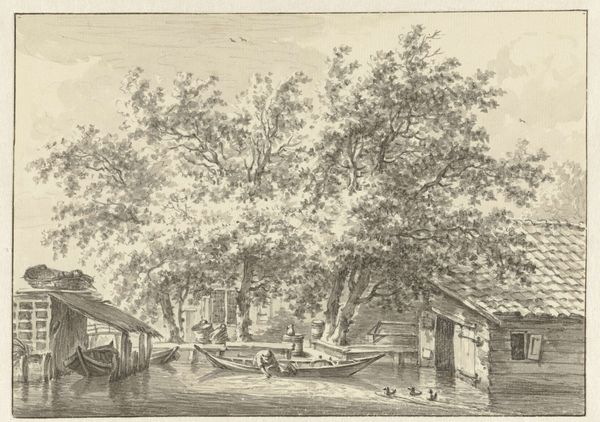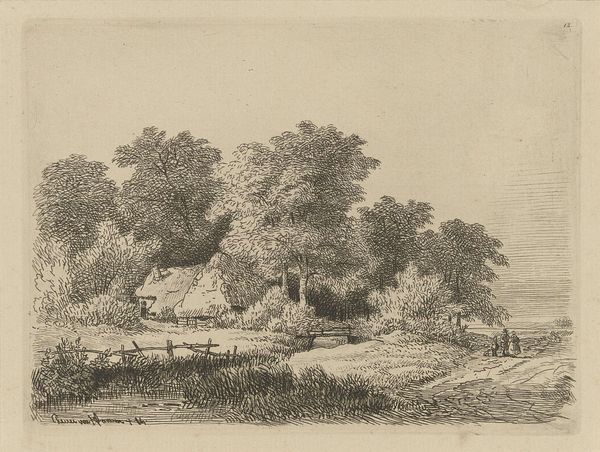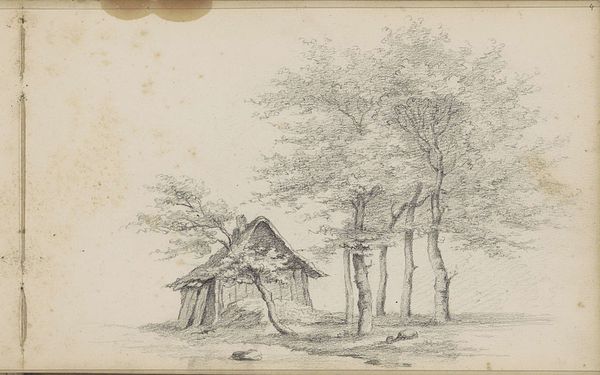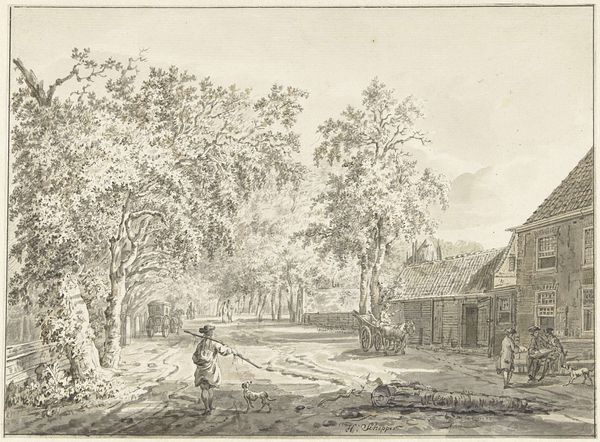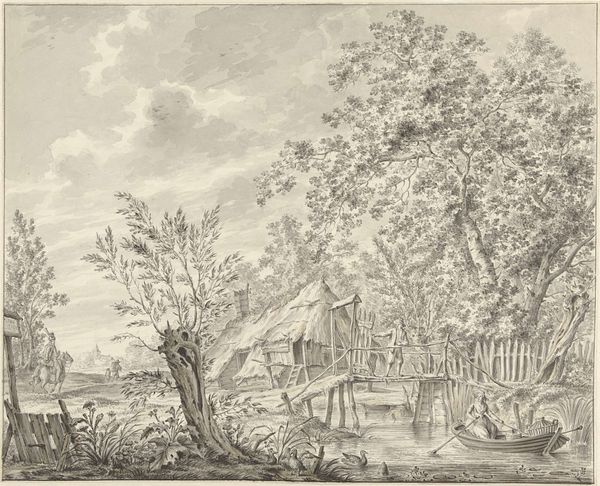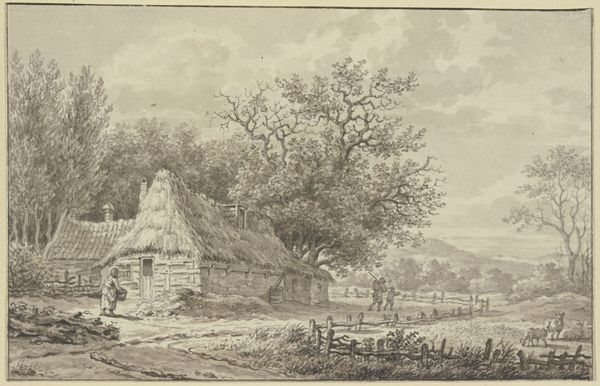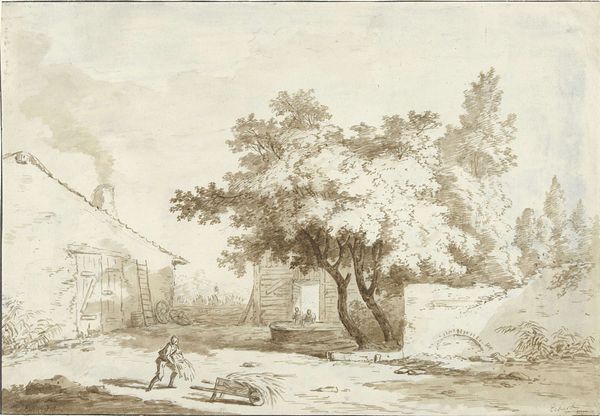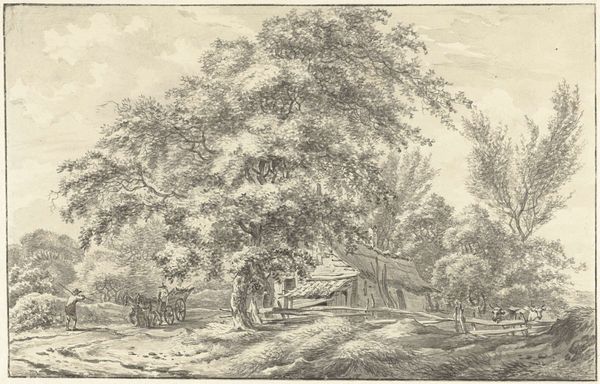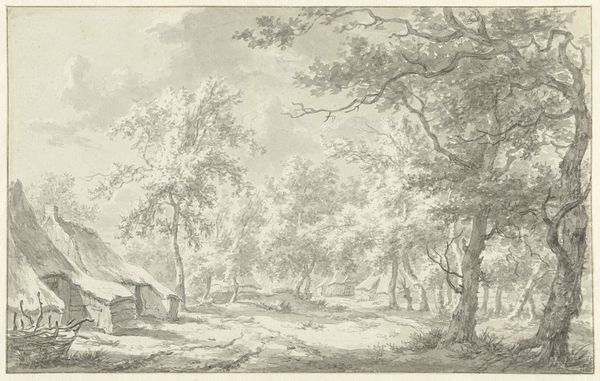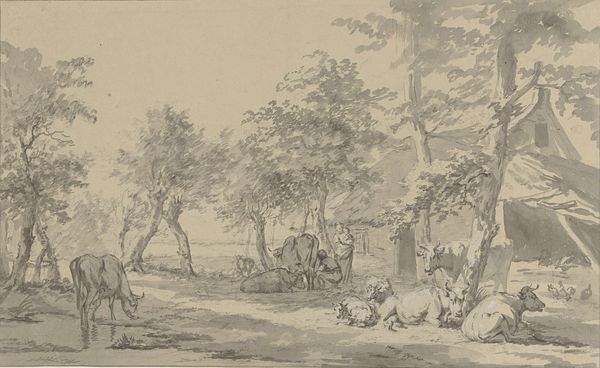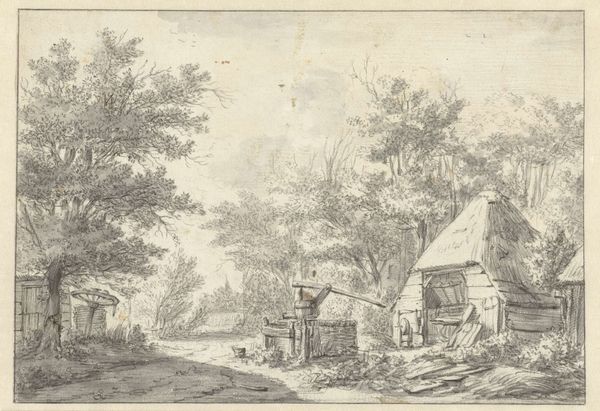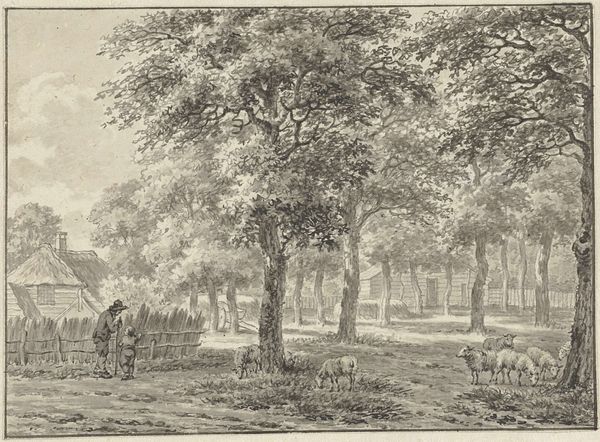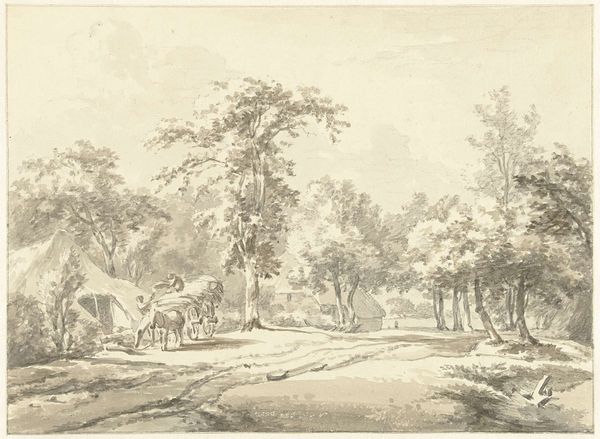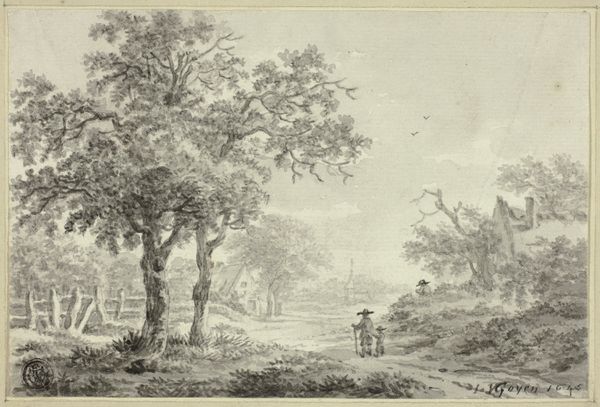
drawing, paper, ink
#
drawing
#
dutch-golden-age
#
landscape
#
etching
#
paper
#
ink
#
genre-painting
#
realism
Dimensions: height 370 mm, width 465 mm
Copyright: Rijks Museum: Open Domain
Editor: This is "Boerderij onder bomen met vee bij water," or "Farm under trees with cattle by water," a drawing in ink on paper by Jan Kobell, made sometime between 1766 and 1833. It feels so still and peaceful, almost like a memory. What stands out to you in this piece? Curator: I’m immediately struck by the artist’s mastery of line. Observe how Kobell uses varied densities and textures in his ink work. Notice how the trees' foliage is rendered with light, airy strokes that contrast sharply with the solid, dark lines defining the architecture of the farmhouse. Editor: Yes, the detail is quite remarkable! But what does that contrast achieve? Curator: The juxtaposition accentuates a visual hierarchy, the formal lines establish the dominance of nature. It directs our focus, first pulling us toward the intricate, almost chaotic patterns of the leaves, then guiding us down to the constructed elements, the farmhouse and outbuildings which appear as only elements, rather stable though they are, under the control of natural laws. Editor: So you are saying, the looser style gives the impression of motion of foliage which sets nature as powerful over static structures. Do you think there's any commentary on the relationship between humans and nature intended here? Curator: Formalistically speaking, intention is secondary to visual effect. However, if we analyze it semantically, nature possesses its complexity. This complexity diminishes as Kobell illustrates how man modifies his natural world into simplified structures and thus controls his experience within its setting. Editor: I see what you mean. I hadn't considered the composition in that light. Curator: Consider the artist’s positioning of light. How it affects your interpretation. Editor: This really highlights how formal analysis helps uncover those compositional decisions, that may be the basis for other readings. Curator: Precisely. This close reading enhances your future critical encounters.
Comments
No comments
Be the first to comment and join the conversation on the ultimate creative platform.
